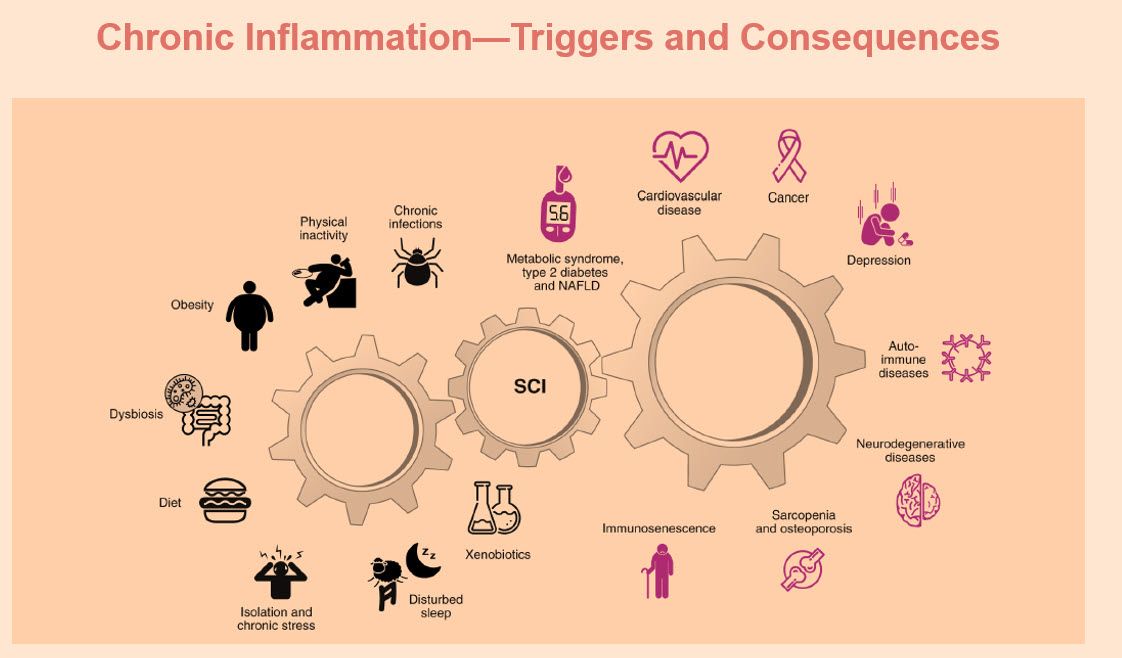June 15, 2014
Paying the Price for Going Mobile
By Paul Hooper, DC, MPH, MS
I just got back from a trip to the East Coast. On my trip, I spent a fair amount of time in airports, on planes and on trains (sounds like a good movie title). As is not uncommon for me (I’m still a bit old-school), I was amazed at how many people are working while “on the road.” From the individual who uses a cellphone to check email messages and Facebook, to the passenger on an aircraft who uses seat time to work on a presentation or proposal on a laptop or tablet, more and more people are working on the go. The problem is, any attempt at using good ergonomics and/or good posture is total fantasy.
Telecommuting or telework is defined as an arrangement in which workers enjoy some flexibility in their working location and hours. It is generally used by workers who rely on the Internet, computers and cellphones. They don’t spend extended times working from a corporate office. Instead, they work from home offices, from their cars and while “on the road.”
I became interested in this topic because for the most part, I am a telecommuter. I work much of the time from my home office. I also became interested because an increasing number of health problems seem to be associated with this rapidly expanding practice.
Of course, you don’t have to be working to use these devices. Everyone is using mobile technology these days, which means everyone is at risk of suffering the health consequences.
Not too long ago, I wrote a white paper for one of my employers titled “Telecommuters and Worker’s Compensation.” The white paper included some information on the number of people who telecommute. It has been suggested that there are 20-30 million people who work from their home at least one day each week. Another 15-20 million work while they are on the road, 10-20 million run some form of home business, and 15-20 million work at home part of the time.
1 With constant advances in technology, these numbers are likely to grow – as are the opportunities to educate and care for patients who utilize this technology.
Not Enough Ergonomic Attention
Over the past few decades, there has been an increasing amount of attention paid to ergonomic principles in an effort to make the workplace safer and more efficient. This consideration has been particularly productive when it comes to workplace injuries. Partly due to the widespread adoption of ergonomic principles, many workplace injuries have been reduced. However, to date, the science of ergonomics hasn’t made much of a dent in the use of mobile technology, whether on or off the job.
Take, for example, the laptop computer. There are ample examples of ergonomically designed keyboards for desktop computers, but the keyboards on laptops are flat and force the wrists into awkward and compromising positions. It almost begs for problems. Combine this with the task of typing while using a laptop computer on an airplane seat-back tray, and you compound the ergonomic problems.
In addition, the keyboards on tablet devices are built into the screen. As such, they are anything but ergonomically designed. And everybody has a smartphone, most of which are able to send text messages.
There are even contests to see who can send the fastest text message. But text messaging and ergonomics don’t go hand in hand, so to speak.
Paying the Price
What does all of this have to do with the chiropractor in practice? One study by Harris International looked at more than 2,000 Americans ages 18 and over. The study indicated that 60 percent of Americans experience some form of health problem due to the use of technology during the day:
- 36 percent had eye strain
- 30 percent had back pain
- 27 percent had neck pain
- 24 percent had headaches
- 21 percent had wrist pain
- 11 percent had carpal tunnel syndrome
- 9 percent had insomnia
Most of these conditions affect the musculoskeletal system and many are seen by chiropractors. Effective treatment must include some attention paid to the origin of these problems. If the etiology is not addressed, the problems will return.
Texter’s Neck / Texter’s Thumb
There are even some “new” problems associated with the poor ergonomics reflective of today’s technology.
The problems aren’t really new, but there is no doubt they are becoming more frequent. For example, “texter’s thumb” (aka “Blackberry thumb”) develops as a result of using the thumbs for sending text messages. It is a form of deQuervain’s tendinitis. “Texter’s neck” is the term used to describe neck pain that results from prolonged poor posture while using a smartphone.
(By the way, “ear bud disease” is also becoming common. It is the result of ear infections due to the use of ear buds that are constantly placed in the ears when listening to music, watching video, etc., via mobile technology.)
According to a recent article published in the Journal of Occupational Safety and Ergonomics, 53 percent of smartphone users suffered from neck pain. 2 A similar study stated that 84 percent of users had experienced pain in at least one body part.
3 It would appear that the culprit for “texter’s neck” is the prolonged forward head carriage that accompanies smartphone use. In addition to the forward head carriage, we’ve all seen individuals holding their cellphones against their ear by bending their neck. While this may allow the individual to use their hands, this posture undoubtedly creates problems.
Other Potential Health Issues
Poor posture and repetitive-stress issues are not the only problems encountered when using today’s mobile devices. Modern laptops generate a fair amount of heat. One study at State University of New York in Stony Brook showed that, when using a laptop actually on the lap, median temperature in the scrotum increased, leading to a reduction of normal sperm cells. 4 Additionally, the heat from using a laptop on the lap may cause skin burns.
It is also worth noting that mobile devices use radio frequency (RF) waves. While no specific evidence exists linking exposure to RF waves to health problems, it is probably wise to minimize such exposure.
After all, no one would dream of walking around with a microwave oven taped to their head.
Some authorities also feel use of mobile technology may be habit forming, even addictive. I happen to agree. Given that so many of our patients present with a primary complaint of neck pain, recognizing the fact that mobile technology plays a role may make our treatments more effective.
Key Points for You / Your Patients
Our world has been made much more accessible by modern technology. It is now possible to stay in constant contact with others and work in places that were unimaginable just a few short years ago. However, the use of this technology comes at a cost. Many of the health problems we now suffer from are the result of inappropriate use of technology.
As usual, common sense prevails. Constant and repetitive use undoubtedly leads to problems. Therefore, the most fundamental advice you can give patients is to take frequent breaks, whether using a smartphone, laptop computer, iPod, etc. Even small breaks of a few seconds may be long enough to reduce the muscle 4 fatigue that comes from using these devices, particularly if use involves a less-than-optimal body position.
There is evidence from the ergonomic literature that the use of microbreaks (10 seconds every 10 minutes) may reduce muscle fatigue by as much as 20-50 percent over an eight-hour day.
Suggest that patients build breaks into their routines. Don’t take several phone calls back to back. Take a few minutes between calls to relax the muscles. Don’t use laptop computers for long periods. Set an alarm clock for 15 minutes and get up and walk around.
The bottom line to emphasize: Movement is good for you.
References
1. Lister K. Undress For Success -The Naked Truth About Making Money at Home. John Wiley & Sons,
2009.
2. Korpinen L, Pääkkönen R. Physical symptoms in young adults and their use of different computers and
mobile phones. Int J Occup Saf Ergon, 2011;17(4):361-71.
3. Berolo S, Wells RP, Amick BC III. Musculoskeletal symptoms among mobile hand-held device users
and their relationship to device use: a preliminary study in a Canadian university population. Appl
Ergon, 2011 Jan;42(2):371-8.
4. Sheynkin Y, Jung M, Yoo P, Schulsinger D, Komaroff E. Increase in scrotal temperature in laptop
computer users. Hum Reprod, 2005 Feb;20(2):452-5.
Click here for more information about Paul Hooper, DC, MPH, MS.
Page printed from:
http://www.dynamicchiropractic.com/mpacms/dc/article.php?id=57033&no_paginate=true&p_friendly=true&no_b=true
– 5 –

Address
New Jersey Address:
227 Madison Avenue, Lumberton, NJ 08048
New York:
2932 Wilkinson Avenue Bronx, NY 10461
Business Hours
New Jersey:
Monday – Thursday:
8:30 AM – 1:00 PM, 3:00 PM– 6:30 PM
Friday:
8:30 AM – 12:30 PM
New York:
Monday, Wednesday, Thursday, Friday:
9:00 AM - 7:00 PM
Tuesday:
9:00 AM - 6:00 PM
